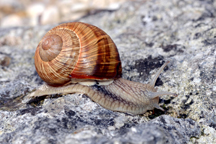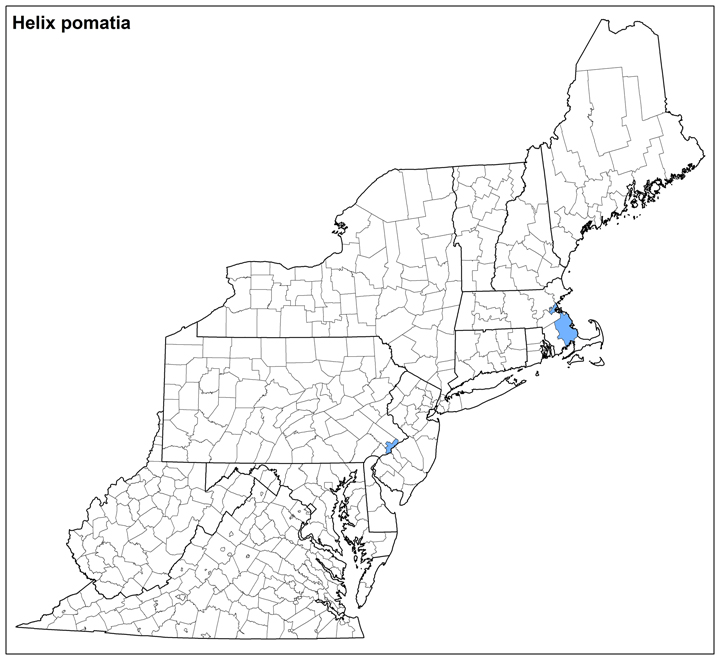Land Snails

Photo: Helix pomatia. Image © Roy Anderson
Click photo to enlarge.
Helix pomatia (Linnaeus, 1758) (non-native)
Family: Helicidae
Common name: Roman Snail, Burgundy Snail
Identification
Width: 30-50 mm
Height: 30-50 mm
Whorls: 5-6
This species’ large rounded shell is cream-colored with faint brown bands. The lip is simple and the umbilicus closed. The shell surface is sculptured with growth wrinkles and light spiral striae. The animal is light-colored, with gray tentacles.
Ecology
Helix pomatia lives in woods, hedgerows, and among tall herbaceous vegetation (Kerney and Cameron, 1979). It favors calcium-rich soils on limestone or chalk (Kerney and Cameron, 1979). It can be a pest in vineyards, but is also favored for escargot.
In an intensive study of an introduced population in a Great Britain chalk quarry, H. pomatia was active April to October, most often during periods of high humidity associated with rainfall (Pollard, 1975). Mating was primarily during May and June, and eggs were laid underground May through August. The number of eggs in a clutch varied from 10 to more than 80 (Pollard, 1975).
Taxonomy
A synonym is Pomatia antiquorum (Pilsbry, 1939).
Distribution
Helix pomatia is the largest snail in northwest Europe (Kerney and Cameron, 1979), where it is introduced, though it is more widespread in its native regions of central and southeast Europe. It has been introduced in various places in the US. A Boston museum record is from a restaurant.
Conservation
NatureServe Global Rank: G5, Secure.
Its popularity for consumption has led to declines and protective measures in France and other European countries.
Ken Hotopp, 9/2017
Range Map (click to enlarge)



